At what meal do most Chinese people eat dim sum?
Most Chinese people enjoy dim sum primarily during breakfast and brunch. This delightful culinary tradition has its roots in Cantonese culture and is an essential part of social dining experiences. Dim sum typically features a variety of small dishes and is served in steamer baskets or on small plates, allowing diners to sample a plethora of flavors.
Dim sum is commonly consumed during weekend brunch, with families and friends gathering in restaurants to share a leisurely meal. The experience of enjoying dim sum goes beyond just the food; it’s a time for connection, conversation, and laughter. Many restaurants start serving dim sum as early as 7 AM and continue until around 3 PM, although some places may offer dim sum later on weekends.
One of the most cherished elements of dim sum is its diverse menu, which often includes:
- Dumplings: These can be steamed, fried, or boiled and are filled with various ingredients like shrimp, pork, or vegetables.
- Buns: Fluffy steamed buns, often filled with barbecue pork (char siu bao), are favorites.
- Spring Rolls: Crispy rolls filled with vegetables, meat, or seafood.
- Rice Noodle Rolls: Soft rice noodles filled with shrimp or pork, typically served with soy sauce.
- Steamed Cakes: Sweet or savory cakes that can vary in flavor, often enjoyed as a dessert.
The meal is often partnered with Chinese tea, which enhances the flavors of the dishes and aids in digestion. Different types of tea can be served, but jasmine tea and pu-erh tea are among the most popular choices during dim sum dining.
Many people may wonder why dim sum is specifically tied to breakfast and brunch. Historically, dim sum originated as a light snack for travelers along the Silk Road, where they would stop at tea houses. Over time, this practice evolved into a meal that is uniquely enjoyed during mid-morning gatherings. The slow pace of brunch allows diners to appreciate not just the food but the whole experience of dining together.
As you explore different types of dim sum, you’ll find that the flavors and presentation can vary significantly based on the region. For instance, the dim sum served in Hong Kong is known for its creativity and culinary artistry, while Northern China tends to favor larger dumplings. No matter where you are in China, the essence of dim sum remains the same: sharing small plates to foster communal dining.
Interestingly, it’s not uncommon for those unfamiliar with dim sum to visit on weekends and order various dishes to share. If you plan to experience dim sum for the first time, consider trying a few different items to understand the broad spectrum of flavors available. This approach will allow you to fully immerse yourself in the dim sum dining experience.
If you’re looking to explore the world of dim sum at home, there are plenty of recipes available online. Websites like The Woks of Life offer diverse recipes that cater to both beginners and experienced cooks looking to recreate the restaurant experience in their kitchen.
For those who don’t have the luxury of visiting authentic Chinese restaurants, some establishments offer a limited dim sum menu during lunch hours on weekdays, although the best experiences are usually reserved for breakfast and brunch slots on weekends.
Dim sum has become synonymous with breakfast and brunch in China. This meal embodies the social aspect of eating and is an integral part of Chinese culture. The variety of dishes, the enjoyment of tea, and the communal spirit make dim sum a culinary experience that continues to thrive across generations. Make sure to gather your friends and family, find a local dim sum restaurant, and savor this delightful tradition. For further exploration into these delicious dishes, check out Dim Sum Central for a deeper dive into the flavors and history behind this beloved meal.
The cultural significance of dim sum in Chinese society
Dim sum holds a unique place in Chinese culture, transcending mere culinary enjoyment to embody shared values, social interaction, and family bonds. This vibrant tradition fosters connections among friends and family as they gather to savor various small dishes, making it more than just a meal; it’s a communal experience that reflects the essence of Chinese society.
In many cities across China, dim sum typically occurs during brunch or breakfast hours, particularly on the weekends. Families, friends, and colleagues come together to enjoy the variety of dishes served in steamer baskets or on small plates. Notably, dim sum meals usually begin in the late morning, around 10 a.m., and continue until 2 p.m. This time frame encourages a leisurely dining experience, allowing diners to linger over tea and conversation.
One of the key aspects of the dim sum tradition is the importance of tea. Chinese tea culture is deeply intertwined with dining experiences, where tea is more than just a beverage; it is considered a vital companion to food. Restaurants typically offer a selection of teas, including pu-erh, jasmine, and oolong, enhancing the flavors of the assorted dishes. This harmony of tea and dim sum exemplifies the holistic approach to meal enjoyment in Chinese culture.
Dim sum dishes vary widely, offering something for every palate. Popular items include:
- Har gow (shrimp dumplings)
- Siu mai (pork dumplings)
- Baozi (steamed buns)
- Char siu bao (barbecued pork buns)
- Cheung fun (rice noodle rolls)
Each dish tells a story of its origin, reflecting regional flavors and traditions. For instance, Cantonese-style dim sum is renowned for its diverse menu and exquisite presentation, while northern Chinese variations often incorporate wheat-based dishes. This regional diversity highlights the rich tapestry of Chinese cuisine, where local ingredients and cooking techniques shine.
Beyond satisfying hunger, dim sum serves as a social catalyst. Gathering for dim sum is synonymous with celebrating relationships, be it among family or friends. It encourages dialogue and laughter, fostering a vibrant atmosphere that characterizes many facets of Chinese life. This communal aspect deepens personal connections and evokes shared memories, making it an essential part of cultural rituals.
The cultural significance of dim sum extends to celebrations and festivals as well. During occasions such as birthdays, weddings, and Lunar New Year, dim sum becomes part of the festivities, symbolizing good luck and togetherness. The act of sharing food relates closely to Chinese philosophies that emphasize harmony and unity.
Moreover, dim sum plays a role in sustaining traditions and introducing them to younger generations. Families often pass down recipes and techniques, creating a sense of continuity and identity. As children witness their elders preparing and enjoying dim sum, they learn to appreciate not just its taste but also the values of family and tradition associated with it.
As more people around the world discover dim sum, its influence spills beyond Chinese restaurants. International eateries have embraced the concept, offering fusion dishes that combine traditional dim sum elements with local flavors. This globalization of dim sum presents an opportunity to showcase the richness of Chinese heritage to diverse audiences, fostering understanding, respect, and appreciation across cultures.
Dim sum is much more than just a meal in Chinese culture. It embodies the spirit of community, tradition, and togetherness. Through this delightful culinary experience, individuals create cherished memories, pass down familial bonds, and celebrate life’s milestones. By understanding the cultural significance behind dim sum, you can appreciate not only its diverse flavors but also the rich social fabric it represents.
For those looking to explore more about the world of dim sum or to find a restaurant near you, check out The Woks of Life for recipes and insights or visit The Spruce Eats for tips and dining etiquette.
Popular dim sum dishes and their ingredients
Dim sum is a cherished culinary tradition in Chinese culture, offering a range of small dishes that are perfect for sharing. Enjoyed during various meals, dim sum is predominantly consumed during brunch, especially on weekends, as families gather to savor the flavors and enjoy quality time together. Let’s delve into some popular dim sum dishes and their delightful ingredients.
Steamed Dumplings
Steamed dumplings are a staple in any dim sum experience, with several variations offering distinct tastes and textures. These dumplings are typically filled with meat, vegetables, or seafood, encased in a delicate dough.
- Siu Mai: Open-topped pork dumplings often featuring shrimp and garnished with a piece of carrot. Ingredients include ground pork, shrimp, and mushrooms, combined with seasoned soy sauce and sesame oil.
- Har Gao: These translucent shrimp dumplings boast a thin, elastic wrapper filled with fresh shrimp, bamboo shoots, and a pinch of salt and pepper for seasoning.
- Jiaozi: Often known as potstickers, these can be steamed or pan-fried. Ingredients include minced pork, cabbage, garlic, and ginger, folded into a pleated dough.
Bun Varieties
Buns are another beloved aspect of dim sum. They come in a range of shapes and fillings.
- Char Siu Bao: These fluffy buns are filled with sweet barbecued pork. The dough is made from flour, sugar, yeast, and milk, creating a soft, pillowy texture.
- Custard Buns (Nai Wong Bao): A sweet treat, these buns are filled with a rich and creamy custard made from eggs, sugar, and milk, enveloped in soft dough.
Deep-Fried Delights
Dim sum also features a variety of deep-fried dishes that are irresistibly crispy and satisfying.
- Deep-Fried Spring Rolls: Crispy rolls filled with a mixture of vegetables, sometimes including shrimp or pork, deep-fried until golden brown. Ingredients typically include carrots, shiitake mushrooms, and vermicelli noodles.
- Wontons: These are often deep-fried and filled with seasoned minced pork and shrimp. They can also be served in soups or with dipping sauces.
Rice Dishes
Rice dishes are an essential part of dim sum, showcasing hearty ingredients and unique flavors.
- Cheung Fun: Slender rice noodle rolls filled with ingredients like shrimp, beef, or char siu. They are usually topped with soy sauce, offering a silky and smooth texture.
- Sticky Rice in Lotus Leaf (Lo Mai Gai): This dish consists of glutinous rice cooked with chicken, mushrooms, and Chinese sausage, wrapped in a lotus leaf and steamed to perfection.
Sweet Treats
Dim sum isn’t complete without some delightful desserts to conclude the meal.
- Mango Pudding: A creamy dessert that combines fresh mango puree with coconut milk and condensed milk, resulting in a smooth and sweet treat.
- Sesame Balls (Jian Dui): These deep-fried glutinous rice balls are filled with sweet red bean paste and coated with sesame seeds, offering a crunchy exterior and chewy texture inside.
When indulging in these popular dim sum dishes, each bite encapsulates the rich diversity of flavors and textures that make dim sum such a marvelous dining experience. For those ready to explore the world of dim sum, reputable websites like Chinatown Connection offer an excellent gateway to learning more about authentic recipes and local eateries. Another great resource is The Spruce Eats, which provides a wealth of information on various dim sum options and their inspirations across different regions.
Whether you’re a long-time dim sum lover or a curious newcomer, trying these popular dishes can elevate your culinary experiences and transport you to the heart of Chinese dining culture.
A guide to the dim sum dining experience
Dim sum is a delightful culinary tradition that holds a special place in Chinese culture. For many, it represents a social experience as much as a dining one. Understanding the dim sum dining experience enhances the enjoyment of this cherished tradition.
The Essence of Dim Sum
Dim sum consists of a variety of bite-sized dishes served in small steamer baskets or on small plates. These dishes come in many forms, including dumplings, buns, rolls, and even desserts. Traditionally, dim sum is enjoyed with tea, which plays a significant role in the overall experience. It is a meal that invites sharing, laughter, and conversation, making it ideal for family gatherings and friendly outings.
When Do Most People Enjoy Dim Sum?
The most popular time to eat dim sum in China is during breakfast and lunch. Many restaurants serve dim sum starting from around 10 a.m. until late afternoon. While lunch is typically considered the main dim sum meal, some people also enjoy dim sum for brunch, offering a leisurely way to start the day.
Types of Dim Sum Dishes
Dim sum can include a wide array of dishes, each with its own unique flavors and textures. Some popular dim sum items include:
- Har Gow: Steamed shrimp dumplings with a translucent skin.
- Siu Mai: Pork and shrimp dumplings topped with crab roe.
- Char Siu Bao: Fluffy buns filled with sweet barbecued pork.
- Cheung Fun: Rice noodle rolls often filled with shrimp, beef, or char siu.
- Egg Tarts: Flaky pastry filled with a rich custard.
Dim Sum Etiquette
Sharing is a key part of the dim sum experience. Here are a few tips to keep in mind while dining on dim sum:
- Take Small Portions: Since dim sum dishes are designed to be shared, take only a small portion of each dish.
- Use Serving Utensils: Always use the serving utensils provided to avoid cross-contamination with your personal chopsticks.
- Tea Etiquette: When someone pours tea, it’s customary to tap the table lightly as a sign of gratitude.
Choosing a Dim Sum Restaurant
When looking for a dim sum restaurant, consider the following factors:
- Authenticity: Choose establishments known for traditional preparations.
- Reviews: Check online reviews to gauge the quality and consistency of the food.
- Variety: A great dim sum restaurant should offer a wide range of dishes to choose from.
The Social Element
Dim sum dining is often accompanied by gatherings of family and friends. It forms a bonding experience where stories are shared and traditions passed down through generations. Enjoying dim sum is not just about the food, but also about the convivial atmosphere it creates. Many families have a tradition of eating dim sum on weekends or special occasions, reinforcing the importance of this culinary experience in daily life.
Exploring Dim Sum Beyond China
Dim sum has found its way to communities around the world, especially in cities with significant Chinese populations. As you travel, don’t miss the chance to find local dim sum spots. In places like San Francisco, New York, and London, you can discover variations unique to those cities. Many restaurants also offer dim sum during specific hours or on weekends, allowing diners from various cultures to engage in this lively dining tradition.
For additional insights and to explore the rich world of dim sum dining, you can check out resources like Chowhound and Serious Eats.
Ultimately, the dim sum dining experience is a cultural adventure. Each bite is an invitation, not only to taste the food but to participate in a tradition that celebrates community, flavor, and the joys of shared moments.
The evolution of dim sum over the years
Dim sum has a rich history that reflects the cultural evolution of Chinese cuisine. Originating from the Cantonese region, dim sum serves as a representation of culinary delight that has transformed significantly over the years. Initially conceived as a light fare to enjoy during tea, dim sum has developed into a worldwide sensation.
During the Tang Dynasty (618-907 AD), it is believed that the practice of drinking tea was popularized, leading to the creation of small snacks paired with tea. However, the term “dim sum” itself emerged much later, during the Song Dynasty (960-1279 AD). The meaning of dim sum translates to “touch the heart,” suggesting that these small dishes were prepared with love and care.
As we delve deeper into the timeline of dim sum, the following key phases can be identified:
- Origins: In the early days, dim sum included simple items like tea cakes and dumplings, enjoyed primarily by wealthy upper-class individuals.
- Popularization: By the Qing Dynasty (1644-1911), dim sum found its way into teahouses, attracting broader audiences and becoming accessible to the masses.
- Global Spread: The 20th century marked the beginning of dim sum’s international journey, with migration spreading the love for these bite-sized delights beyond Chinese borders.
- Modern Trends: Today, variations of dim sum appear all around the world, featuring influences from local ingredients and cuisines, attracting a diverse clientele with diverse tastes.
In traditional settings, dim sum is often accompanied by tea, typically served in small pots. The types of tea used range from green tea to pu-erh, enhancing the overall experience. As it evolved, so did the variety of dishes. You can now find an extensive range of items on dim sum menus, which include:
| Type of Dim Sum | Common Ingredients | Cooking Method |
|---|---|---|
| Dumplings | Pork, shrimp, vegetables | Steamed, boiled, or pan-fried |
| Buns (Bao) | Pork, chicken, black bean paste | Steamed |
| Spring Rolls | Cabbage, carrots, shrimp | Deep-fried |
| Tart | Egg custard, fruits | Baked |
The cultural significance of dim sum cannot be understated. When locals think about dim sum, images of lively gatherings and conversations come to mind. It symbolizes a social activity where friends and family can connect over a shared meal. These meals are often enjoyed in brunch or lunch settings rather than dinner, making it a unique culinary experience.
As social media and globalization continue to influence dining habits, innovative chefs are experimenting with dim sum. They are introducing fusion dishes that combine traditional elements with contemporary flavors and techniques. New trends in dim sum may include:
- Vegan and Vegetarian Options: As plant-based diets rise in popularity, many dim sum chefs are crafting creative vegan versions of traditional favorites.
- International Influences: Flavor profiles from different cuisines are sparking new ideas, such as using curry spices or incorporating local seafood.
- Health Consciousness: Steamed dishes and gluten-free options are becoming more common as consumers demand healthier choices.
To explore the vibrant world of dim sum further, various resources are available. Websites like Chowhound and Serious Eats provide delicious recipes and insights into dim sum origins. You might even find tips on where to enjoy authentic dim sum in your area.
The journey of dim sum from a simple tea accompaniment to a diverse culinary phenomenon truly reflects the dynamic nature of food culture. Today, this delightful form of cuisine not only serves as a testament to tradition but also embodies innovation, drawing food lovers from all walks of life. Whether you are enjoying it at a traditional teahouse in Hong Kong or a local eatery elsewhere, dim sum remains a cherished aspect of Chinese gastronomy. Each dumpling or bun presents a unique story, inviting everyone to partake in its evolution.
Comparing dim sum traditions in different regions of China
Dim sum is more than just a meal in China; it is a culinary art and a cherished tradition. As you explore the different regions of China, you’ll discover unique practices and dishes that make dim sum a delightful adventure. Each region adds its singular flair to this beloved cuisine, showcasing local ingredients and culinary styles.
In Guangdong Province, particularly in Guangzhou (formerly Canton), dim sum is an essential part of everyday life. Families often gather to enjoy a leisurely brunch. The tradition of “yum cha,” which translates to “drink tea,” involves sipping tea while savoring small plates of dim sum. This usually occurs in large tea houses bustling with conversation and the clattering of bamboo steamers.
Here, you’ll find a wide array of dim sum dishes, renowned for their variety and flavors. Some favorites include:
- Har gow: These delicate shrimp dumplings are a must-try, with translucent wrappers that showcase the colorful filling.
- Siu mai: Open-topped pork dumplings adorned with a dash of crab roe, embodying the essence of dim sum.
- Pork buns: Steamed or baked, these buns come generously filled with seasoned, juicy pork.
Moving north to Beijing, the dim sum experience shifts in style and flavor. While the city might not be as famed for dim sum as Guangzhou, it still boasts some delightful options. In Beijing, dim sum often accompanies hot pot meals, and you can find more savory dishes utilizing local ingredients. One popular dish is the jiaozi, or dumplings, which are typically filled with pork or vegetables and served with a soy-based dipping sauce.
Another region worth discussing is Shanghai, which also has its unique take on dim sum. In Shanghai, dim sum is often characterized by its emphasis on soup dumplings. The xiao long bao is a prized item – a soft dumpling filled with a flavorful broth that bursts in your mouth. To fully appreciate the Shanghai dim sum experience, many diners enjoy their meal in a traditional teahouse, where the atmosphere is lively and warm.
| Region | Signature Dishes | Dining Style |
|---|---|---|
| Guangdong | Har gow, Siu mai, Pork buns | Yum cha in tea houses |
| Beijing | Jiaozi, Savory dumplings | Accompanied with hot pot |
| Shanghai | Xiao long bao, Fried dumplings | Traditional teahouses |
When you travel close to the coast, such as in Xiamen or Shenzhen, the local seafood takes precedence in the dim sum dishes. Residents of these areas often include fresh fish and shellfish in their dumplings, providing a taste of the ocean with every bite. The seafood qualities add a delightful contrast to the sweeter and more savory profiles commonly found in inland areas.
If you venture to Chengdu in Sichuan Province, you’ll be surprised to find a spicy twist on traditional dim sum. Sichuan cuisine is known for its bold flavors and spice. Dim sum dishes here might incorporate fiery chili oil or flavorful Sichuan peppercorn, offering a uniquely memorable experience for the adventurous eater.
Across the regions, one thing remains constant: the communal aspect of dim sum dining. Whether you are with family or friends, sharing small plates fosters a sense of togetherness. It is an experience meant to be enjoyed slowly, with laughter and conversation accompanying each bite.
For further explorations of dim sum traditions and to try recipes specific to a region you’re interested in, visit The Spruce Eats or China Highlights. These resources will introduce you to more about the intricate details of dim sum and its cultural significance in various regions.
As you can see, the world of dim sum is diverse, with each region offering dishes and experiences that reflect local tastes and traditions. By exploring these different customs, you not only enjoy delightful food, but you also engage with the rich culture that makes dim sum a beloved feature of Chinese cuisine.
Tips for making dim sum at home
Making dim sum at home can be a delightful experience, allowing you to enjoy this traditional Chinese cuisine in the comfort of your kitchen. Whether you’re a seasoned cook or just starting out, here are some tips to help guide you through this culinary adventure.
Choosing the Right Ingredients
The quality of your dim sum largely depends on the ingredients you use. Here are some key components to consider:
- Flour: Use all-purpose flour for dumpling wrappers. You can also experiment with rice flour for gluten-free options.
- Meat: Popular fillings include pork, chicken, or shrimp. Look for fresh, high-quality meat.
- Vegetables: Consider ingredients like mushrooms, bok choy, and Chinese chives for flavorful vegetarian options.
- Seasonings: Soy sauce, sesame oil, and scallions will elevate your dim sum’s flavor.
Preparing the Dough
Creating the perfect dough is essential for a delicious dim sum. Follow these steps for a basic dumpling dough:
- Mix 2 cups of all-purpose flour with just under 1 cup of boiling water. Stir until a dough forms.
- Knead the dough on a floured surface for about 10 minutes until smooth.
- Cover the dough and let it rest for at least 30 minutes to relax the gluten.
Choosing Your Fillings
Fillings can significantly impact the taste and texture of your dim sum. Here are some popular combinations you can try:
| Filling | Description |
|---|---|
| Pork and Shrimp | A mix of ground pork and finely chopped shrimp creates a savory and juicy filling. |
| Chicken and Mushrooms | Diced chicken and shiitake mushrooms offer a great umami flavor. |
| Vegetable Medley | A combination of cabbage, carrots, and bamboo shoots for a crunchy texture. |
Shaping the Dumplings
Shaping your dumplings is an art. Here’s how to do it effectively:
- Divide your rested dough into small balls, about the size of a golf ball.
- Roll each ball into a thin circle, about 3 inches in diameter.
- Place a small amount of filling (around 1 tablespoon) in the center of the wrapper.
- Fold the wrapper in half and pinch to seal. Experiment with pleating for a decorative touch!
Cooking Methods
There are several ways to cook your dim sum. Here are some common methods:
- Steaming: This is the most traditional method. Use a bamboo steamer lined with parchment paper to prevent sticking.
- Boiling: Bring a pot of water to a boil and gently drop in the dumplings until they float.
- Pan-frying: Fry the dumplings until crispy on one side, then add a little water and cover to steam.
Serving Suggestions
Dim sum is best enjoyed fresh and hot. Serve with dipping sauces such as soy sauce, chili oil, or vinegar for an extra kick. You may also want to create a dim sum feast by offering a variety of types, such as buns, rolls, and desserts.
For more advanced techniques and detailed recipes, visit Yummly or Serious Eats. These sites offer a wealth of information and inspiration for your dim sum-making journey.
With these tips, you’ll be well on your way to crafting delicious dim sum right at home. Enjoy the process and your tasty creations with family and friends!
Key Takeaway:
Dim sum, a cherished culinary tradition in Chinese culture, is primarily enjoyed during breakfast or lunchtime, making it a popular choice for social gatherings. This meal opens the door to a rich communal dining experience, where families and friends come together to savor a variety of small plates, share stories, and strengthen their bonds. The cultural significance of dim sum cannot be overstated; it embodies the essence of hospitality and the importance of community within Chinese society.
As you indulge in dim sum, expect an array of famous dishes, each brimming with unique flavors and ingredients. From delicate dumplings filled with shrimp and pork to fluffy buns and flaky pastries, the variety is tantalizing. Popular dim sum dishes like har gow (shrimp dumplings), siu mai (pork dumplings), and char siu bao (barbecue pork buns) showcase the artistry of Chinese cooking and the importance of fresh, quality ingredients.
The dim sum dining experience is a delightful journey. Diners typically choose from rolling carts laden with delicious offerings as they converse and savor each bite. This interactive experience enhances the enjoyment of the meal, making it more than just dining but a cherished ritual that varies geographically. Different regions in China have distinct dim sum customs, with Cantonese dim sum being the most widely recognized, while variations exist in places like Hong Kong and Macau.
Over the years, dim sum has evolved, reflecting modern tastes and culinary innovations. This evolution is a testament to the dish’s adaptability and enduring popularity. For those interested in trying their hand at making dim sum at home, simple tips include sourcing authentic ingredients, mastering the art of dough preparation, and being patient with the steaming process.
Dim sum is not only a beloved meal celebrated at breakfast and lunch but also a reflection of Chinese culture and tradition. By exploring its diverse dishes, dining customs, and regional variations, you can appreciate the significance of this culinary art. Whether in a bustling restaurant or your kitchen, dim sum invites you to experience a slice of Chinese heritage, fostering connection and celebration through shared meals.
Conclusion
Dim sum is more than just a meal; it embodies a rich tapestry of Chinese culture and tradition. Primarily enjoyed during brunch or lunch, this delightful cuisine serves as a cherished ritual for families and friends to gather around the table, share stories, and savor a variety of small dishes. The cultural significance of dim sum within Chinese society cannot be understated, as it reflects community, hospitality, and a sense of togetherness.
Throughout the article, we’ve explored popular dim sum dishes, such as dumplings, buns, and rolls, which showcase an array of ingredients and flavors, appealing to taste buds both near and far. The dining experience itself is a sensory adventure, characterized by the lively atmosphere of bustling tea houses and the delightful sight of carts filled with steaming treasures.
As we traced the evolution of dim sum across different eras, it’s clear that this culinary art form has adapted while remaining rooted in tradition. We’ve also ventured into the regional variances that define dim sum across China, highlighting the unique twists each area brings, from spicy Sichuan to the subtle flavors of Cantonese dim sum.
For those inspired to create their own dim sum at home, we shared valuable tips to guide your culinary journey. Embracing the love for dim sum means not only enjoying the dishes but also appreciating the stories and connections they foster. Whether you’re dining out or whipping up a feast in your kitchen, dim sum invites you to savor the moment and celebrate the authentic spirit of Chinese cuisine. It’s a delightful reminder that food is a bridge, connecting us to each other and to our cultural roots.
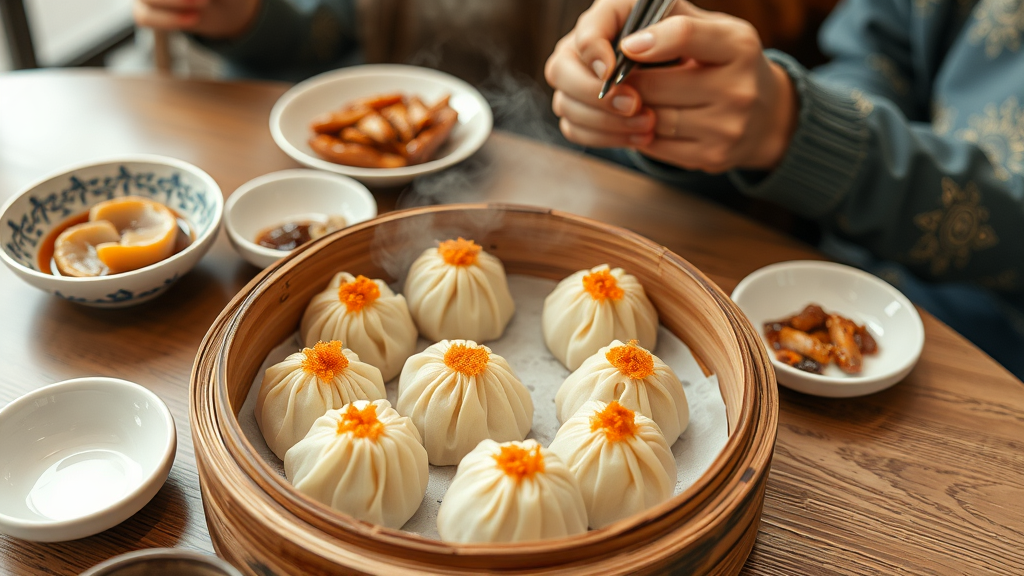

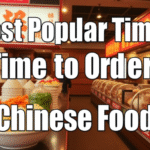
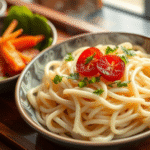
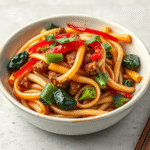
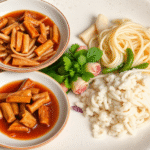
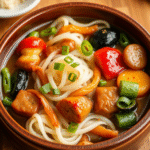
Leave a Reply